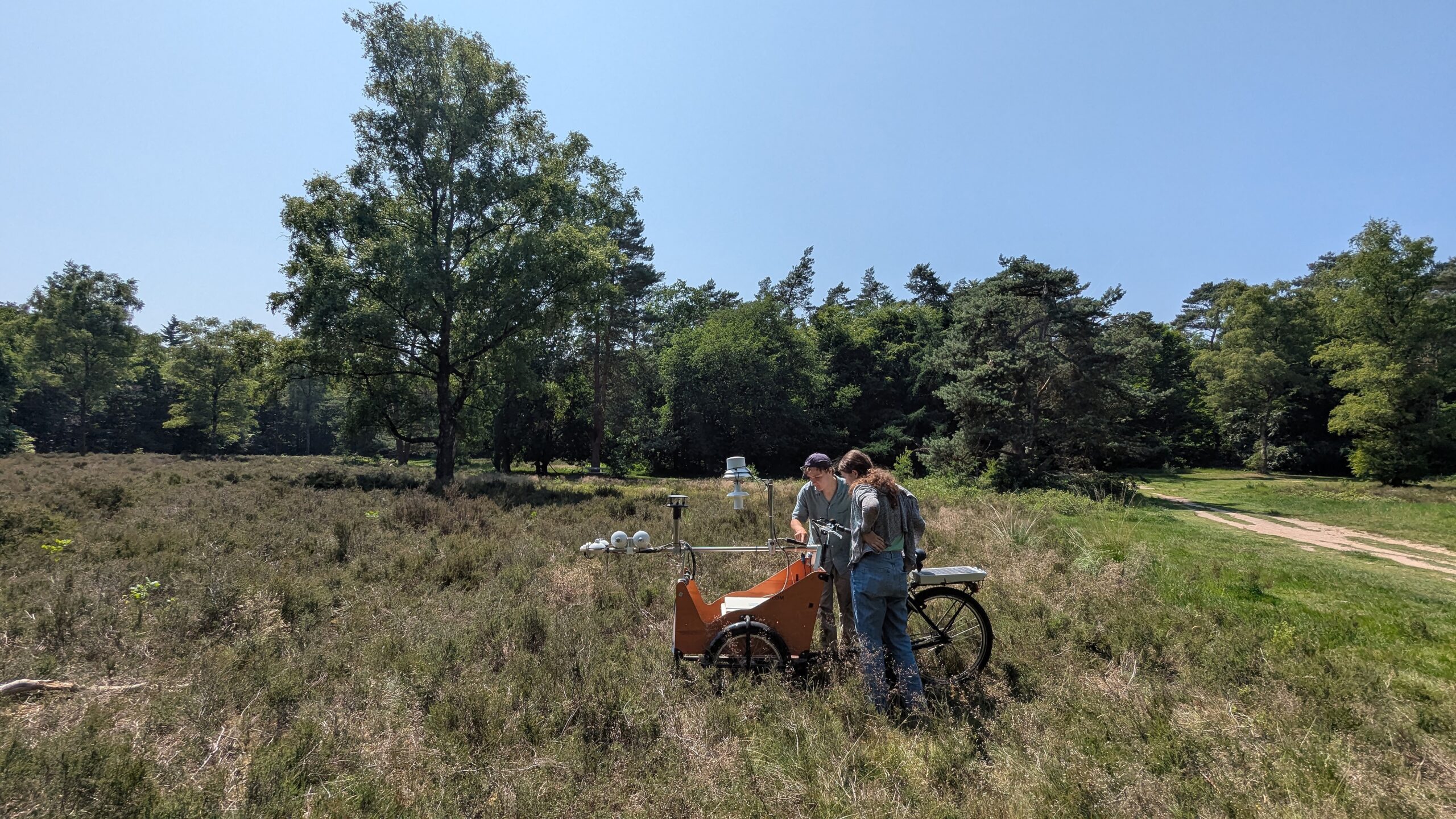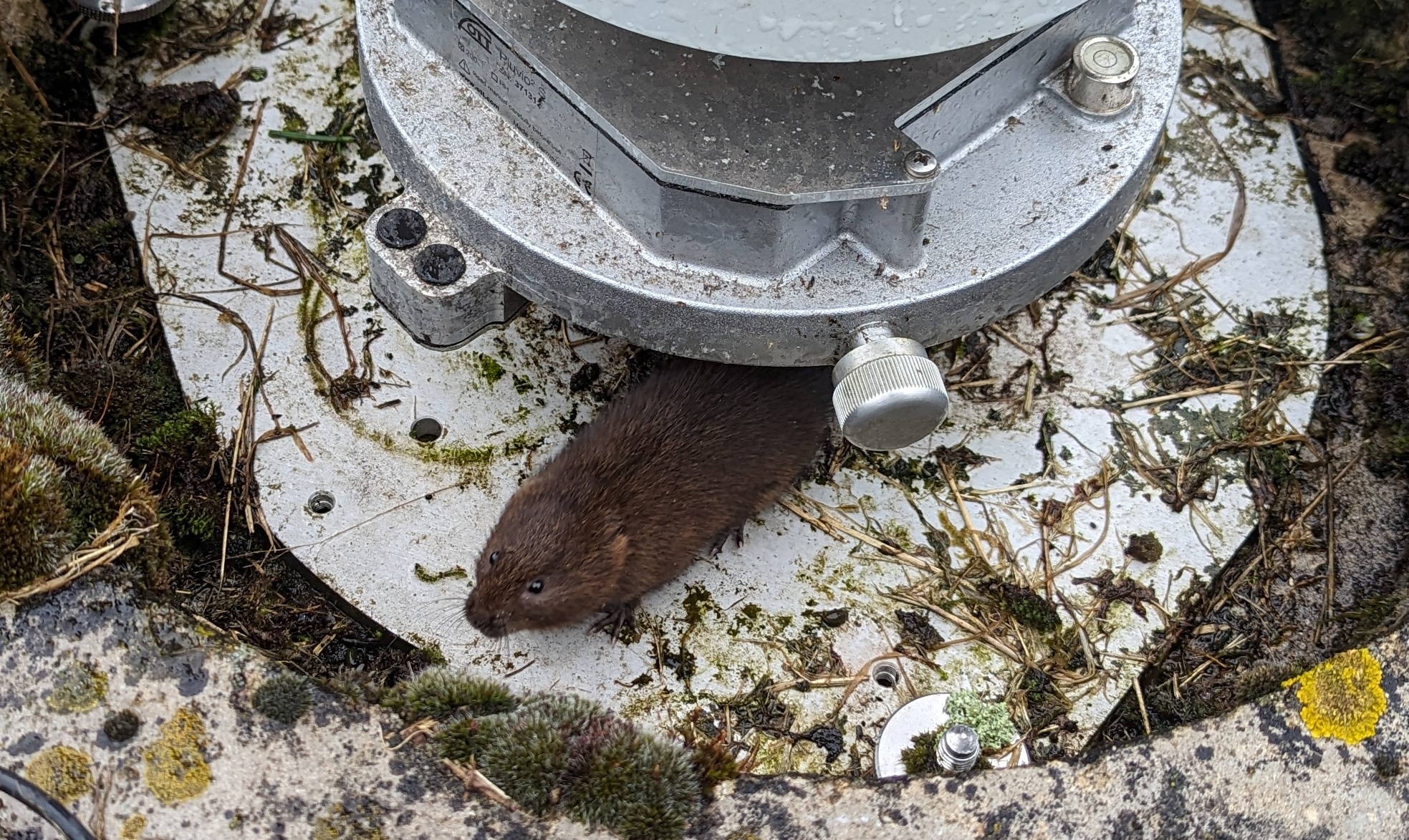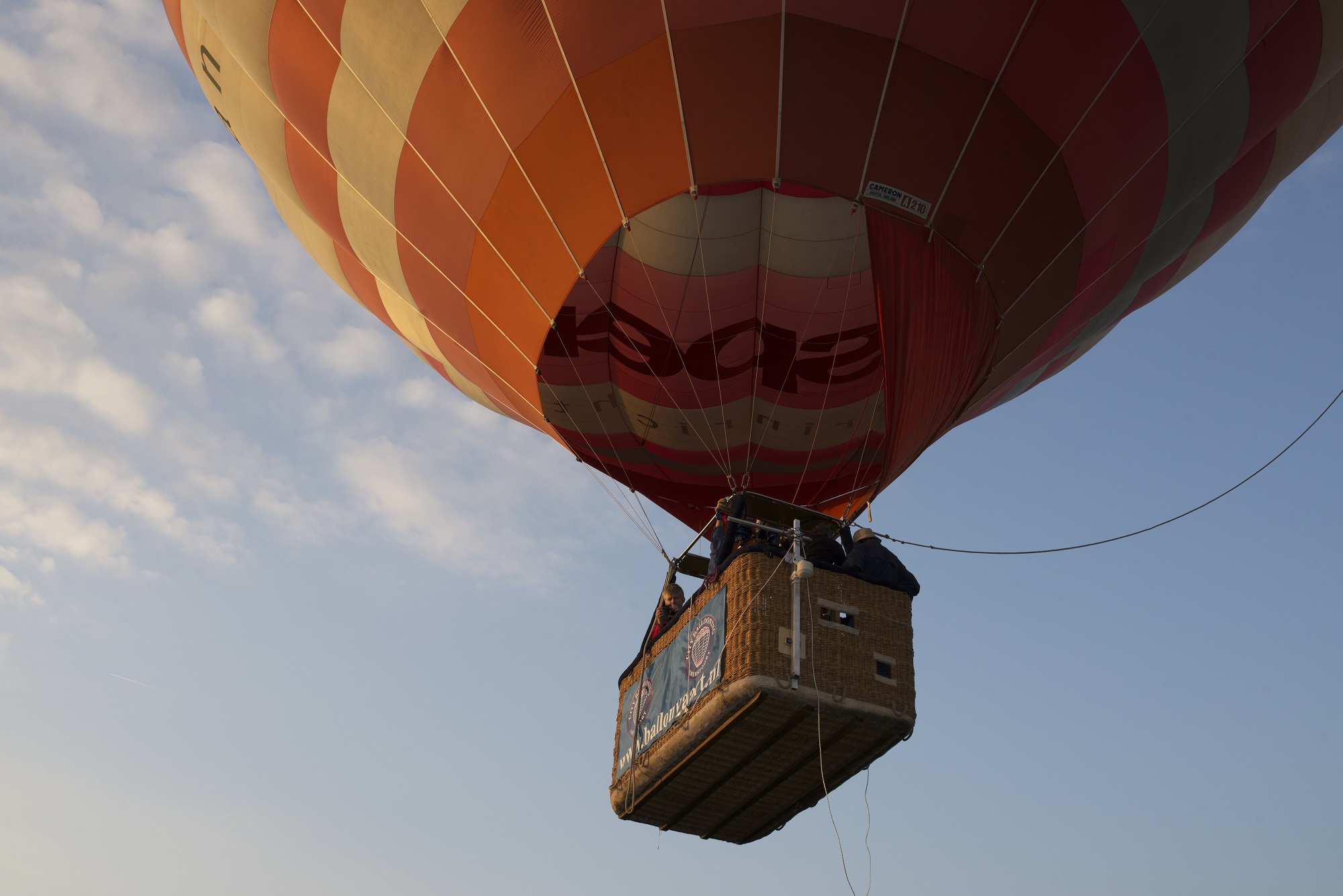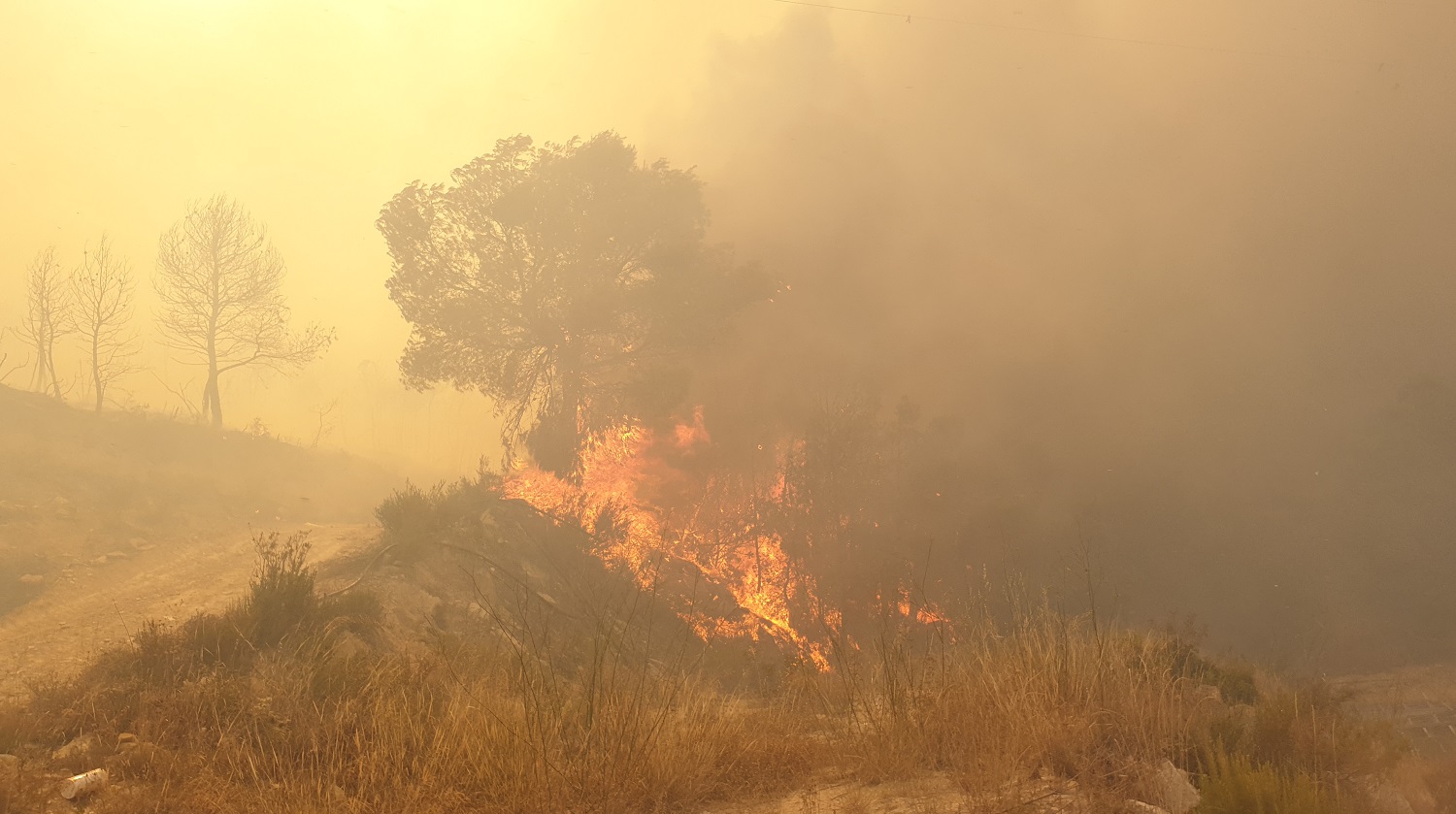Is the heat stress on heathland genuinely higher than in the neighbouring woodland? And if so, by how much? Even students can measure that accurately — thanks to the delivery bike that was converted into a mobile meteorology lab by Bert Heusinkveld, a Meteorology & Air Quality researcher.
Heusinkveld developed the bike some years ago for a study of the urban climate. ‘But I also use it in practical activities. I enjoy teaching students how to work with it. They already do so much theoretical work and spend so much time on computers. You can let them play with a model, of course, but this is much more fun. Letting them carry out the measurements themselves works well didactically too, because then they can make the link with what they experienced at the time. You don’t even need to open your eyes to know whether you’re standing in the wood or heathland — you just feel it.’
The bike was designed so that you can use it to measure all the aspects of a microclimate that you need to calculate the thermal stress at a site, explains Heusinkveld. ‘For example, how much extra solar radiation there is, how much radiant heat and how much shadow. How much wind? What is the relative humidity? That all affects the flow of heat from the surroundings to your body and vice versa.’
Stress and sensors
The bike is fitted with measurement devices for air temperature, wind speed, humidity, solar radiation and thermal radiation. The latter two variables are measured in six different directions. ‘The human body has a relatively large surface area on the side so you need more than just one sensor to get an impression of the human heat experience,’ he explains. ‘I have six for both the solar radiation and the thermal radiation so we can measure them in six directions.’ The bike lab can also measure the ground’s reflection factor. ‘That is termed the albedo. You will notice what effect that has on heat stress if you are near a surface that is light-coloured, as it reflects the heat. I recently found myself cycling past Aurora on a sunny day and I could clearly feel the albedo effect.’ The power for all that measurement equipment is supplied by a little solar panel on the pannier rack.
The advantage of the bike is that you can easily get to a lot of places — more than with a car — while it is far less disruptive. ‘Although pushing it into the woods takes quite an effort,’ admits Heusinkveld. ‘It’s not exactly light with all that equipment. I’d guess it weighs about 60 kilos. But you can still ride the bike, no problem. And as you are riding around, you can measure spatial information because it has a GPS that records the location once a second. That means I can reconstruct to the nearest second where the bike was and what temperature it was everywhere.’
Apparent temperature
The bike was ‘operational’ on the first tropical day of 2025, on 13 June. Soil, Water & Atmosphere students were doing measurements for a practical activity as part of the ‘integration course’, which forms the conclusion to the academic year. They found a big difference in the apparent temperatures at their measurement sites on the heath near Ede, in the nearby woods and on campus. Heusinkveld picks up their report: ‘The apparent temperature in the wood, with all that shadow, was 27.6 degrees Celsius, on the heath it was 40.5 degrees and on campus as much as 43.9 degrees — that’s because there’s a lot of stone and asphalt here and the grass was already drying out.’
For everyone who is wondering what that apparent temperature means exactly, Heusinkveld explains it one more time: ‘That is the temperature the average person experiences when walking at a gentle pace. In addition to the air temperature, other factors play a role such as the wind speed, humidity, the cooling effect — or lack of it — of evaporating sweat, incident sunlight, the ground albedo and the radiant heat. You convert those factors with respect to a reference location — it is as if you were sitting in a climate cell where you had to turn up the temperature until you were feeling the same level of heat and getting the same degree of transpiration. That’s what it means.’

 Soil, Water & Atmosphere students Janne Smidts and Jesse Bosma carry out measurements using Heusinkveld’s meteo-bike lab.
Soil, Water & Atmosphere students Janne Smidts and Jesse Bosma carry out measurements using Heusinkveld’s meteo-bike lab. 

